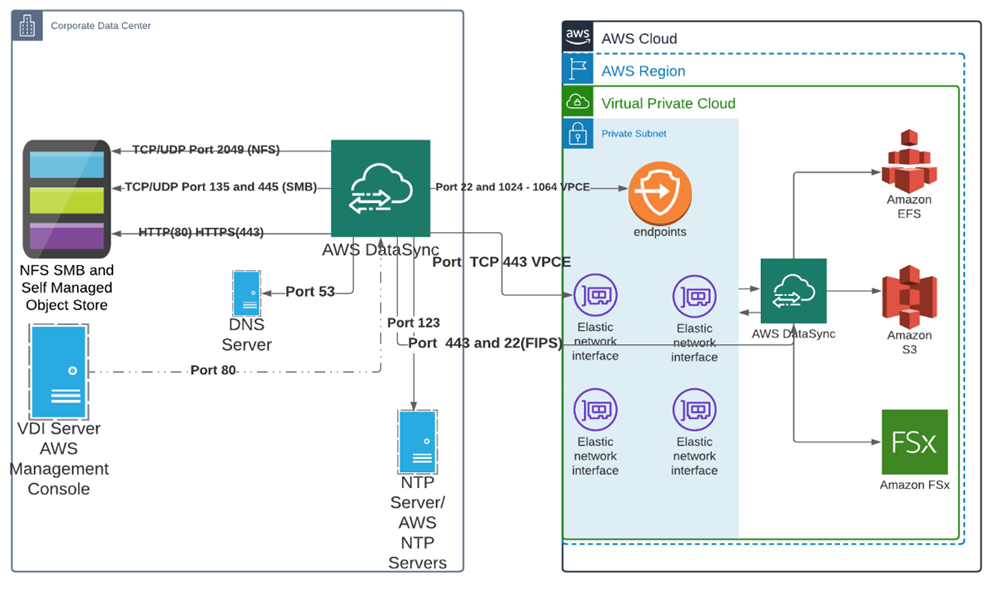Switching to the cloud from an on-premise network offers enormous benefits. But telecommunications companies normally require large-scale data migrations that can be a substantial challenge. Choosing which tool, technology, and methodology can be a critical strategic decision, and the right choices depend on asking the right questions upfront – and understanding all available options.
The reality is that standard tasks relating to data transfers – including things like scripting copy jobs, scheduling and monitoring transfers, validating data, managing downtimes, and optimizing network utilization – can impact the overall migration. For telecommunications companies considering migrating to the Amazon Web Services (AWS) cloud environment, it’s important to analyze three challenges before beginning their migration:
Understanding and addressing all of these challenges, along with proper status reporting, will help ensure the primary goal for any data migration: accuracy. Wipro has substantial experience in migrating data from data centers to data clouds, and our understanding of all of these challenges can help telecommunications make the best choices of their many options:
AWS Snowball
The AWS Snowball solution uses secure appliances to transfer large amounts of data into and out of the AWS cloud, making it ideal for enterprises with, say, a petabyte or more of data to be transferred. Snowball will minimize the network cost and wait times. Snowball appliances are requested from the AWS console, then connected to a LAN and ops hub to manage the device, transfer data, or launch EC2 instances, ultimately, migrate to AWS.
AWS Transfer for SFTP
For migrations to Amazon Simple Storage Service (Amazon S3) that demand seamless, secure transfers, AWS Transfer for SFTP is best solution. It can be set up and configured easily with authentication, and handles SFTP, FTPS, and FTP.
Standard rsync Utility
The open source utility rsync efficiently transfers and synchronizes files between a computer and an external hard drive and across networked computers by comparing the modification times and sizes of files. It is commonly found on Unix-like operating systems. Xargs is often used with with rsync to achieve parallelism using rsync.
AWS S3
Another tool from AWS is S3, a reliable object storage service that offers durability, availability, performance, security, and virtually unlimited scalability at very low costs. S3 Load is compatible with all AWS Services and is widely used to store backup data, data transfer, and exchange between parties and migration activity. S3 is the target storage locations for many migration tools including Amazon Gateway, AWS Snowball, AWS transfer for SFTP, AWS Data sync. This is the tool when you want to opt for normal data transfer between data center and AWS and can cater to small or medium data migrations.
AWS DataSync
Telecommunications companies interested in B/OSS transformation to AWS – with a need to asynchronously transfer data between NFS, SMB and object storages in a datacenter to S3, EFS, and FSx storages in AWS and vice versa – requires a tool to write scripts, schedule tasks and jobs, monitor transfers, validate data and optimize network utilization. The simple, automated AWS DataSync tool handles all of these tasks with a well-defined interface and guidelines that can be followed to set up data transfers 10 times faster than open-source tools, over the internet or AWS Direct Connect links. This is pay as you go service and is applicable for NFS, EFS, SMB, S3, FSx.
Based on Wipro’s experience with data migration and telecommunications, here’s a comparison view of these approaches from multiple perspectives:

Wipro has used all of the above approaches to migration, and AWS DataSync is, for most telecommunications applications, the best choice. AWS DataSynic is a software agent that provides simple, automated data transfer and can connect to Network File Systems (NFS), Server Message Block (SMB) storage, and managed object storage. Perhaps most important, it is faster than another tool, enabling transfer speeds up to 10 times faster other solutions. It’s also less expensive to manage and report.
While there are many architectural possibilities with AWS DataSync, Wipro believes the one depicted below is well suited for majority of the production use cases and is able to handle data transfer for a multi cloud migration scope.

After choosing AWS Datasync, it’s essential to set up and use it in an efficient way. Listed below are some critical points that should be taken into consideration from the perspectives of requirements, access, and usage for AWS datasync to work in a production setup.
Agent Requirements – Hypervisor, VM and Ec2 Requirements
1. Network Requirements
2. Agent Download/Deployment and Activation
3. Initiate data transfer
4. Clean up
Based on Wipro’s extensive experience, AWS DataSync is an excellent approach to the significant challenge of data migration for telecommunications companies. Understand the challenges, understand the available options, and do the groundwork to ensure success.
AWS |
Amazon Web Services |
S3 |
Simple Storage service |
NFS |
Network File Storage |
SMB |
Server Message Block |
EFS |
Elastic File Storage |
Xargs |
eXtended ARGuments unix command |
Rsync |
Remote Sync |
SFTP |
Secure File Transfer Protocol |
FTPS |
File Transfer Protocol Secure |
NTP |
Network Time Protocol |
VM |
Virtual Machine |
Ec2 |
Elastic cloud compute |
FSx |
Amazon Web Services Full managed Windows native file system |
LAN |
Local Area Network |
Abhishek Tanwar
Enterprise Architect
Abhishek Tanwar is an Enterprise Architect leading the Cloud Transformation program in T-Mobile Netherlands as part of the Domain & Consulting Ideas group. He has 15+ years of experience working with various service providers across Europe and southeast Asia in B/OSS and digital domain.
Girish P
AWS Senior Architect, Wipro Limited
Girish P is an AWS Senior Architect who leads the AWS Infrastructure team in T-Mobile Netherlands; he a part of Wipro’s Cloud Infrastructure Services group. He has 16 years of experience working with clients in the banking, media, and telecom domains various in Europe, the United Kingdom, and the Asia Pacific region.